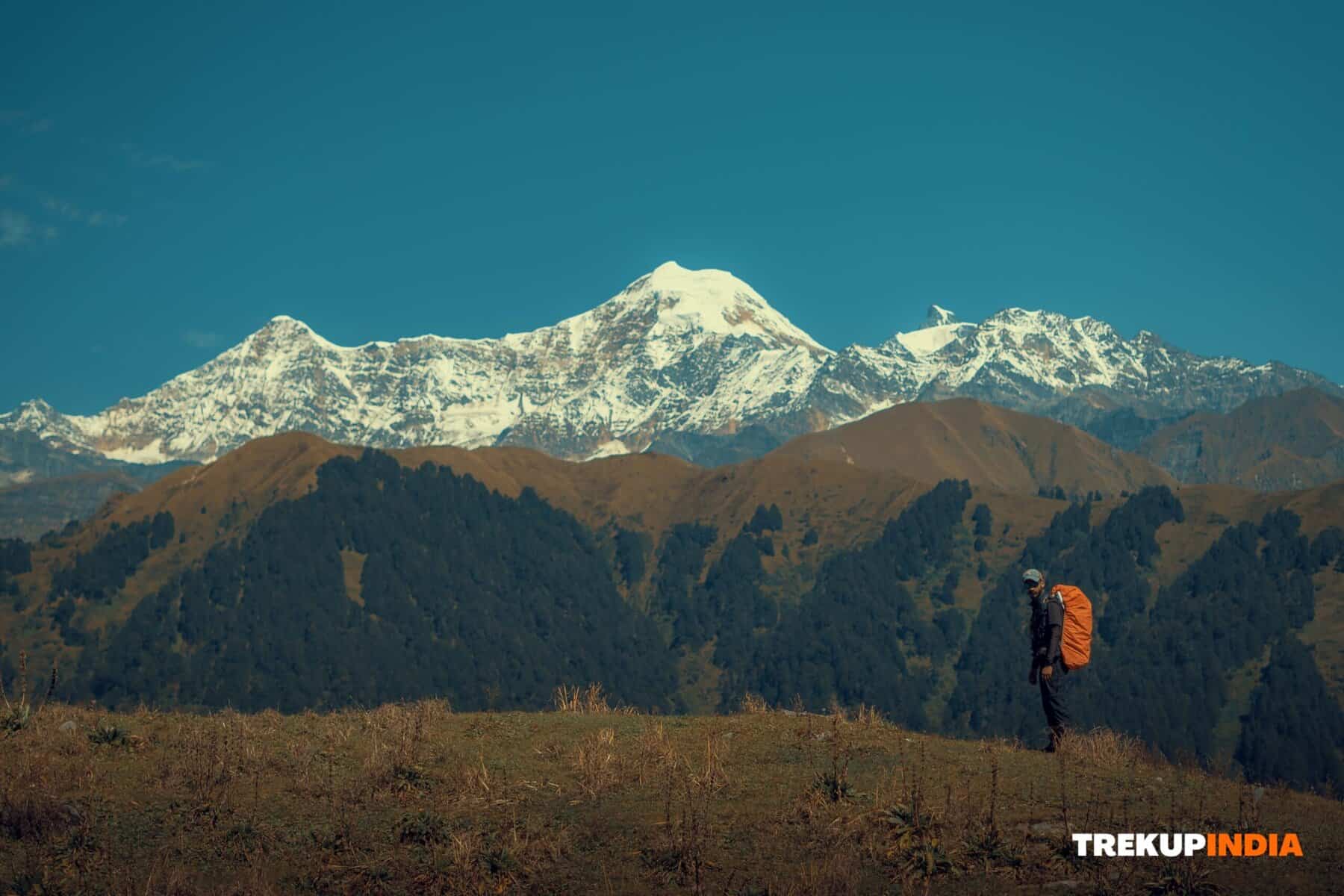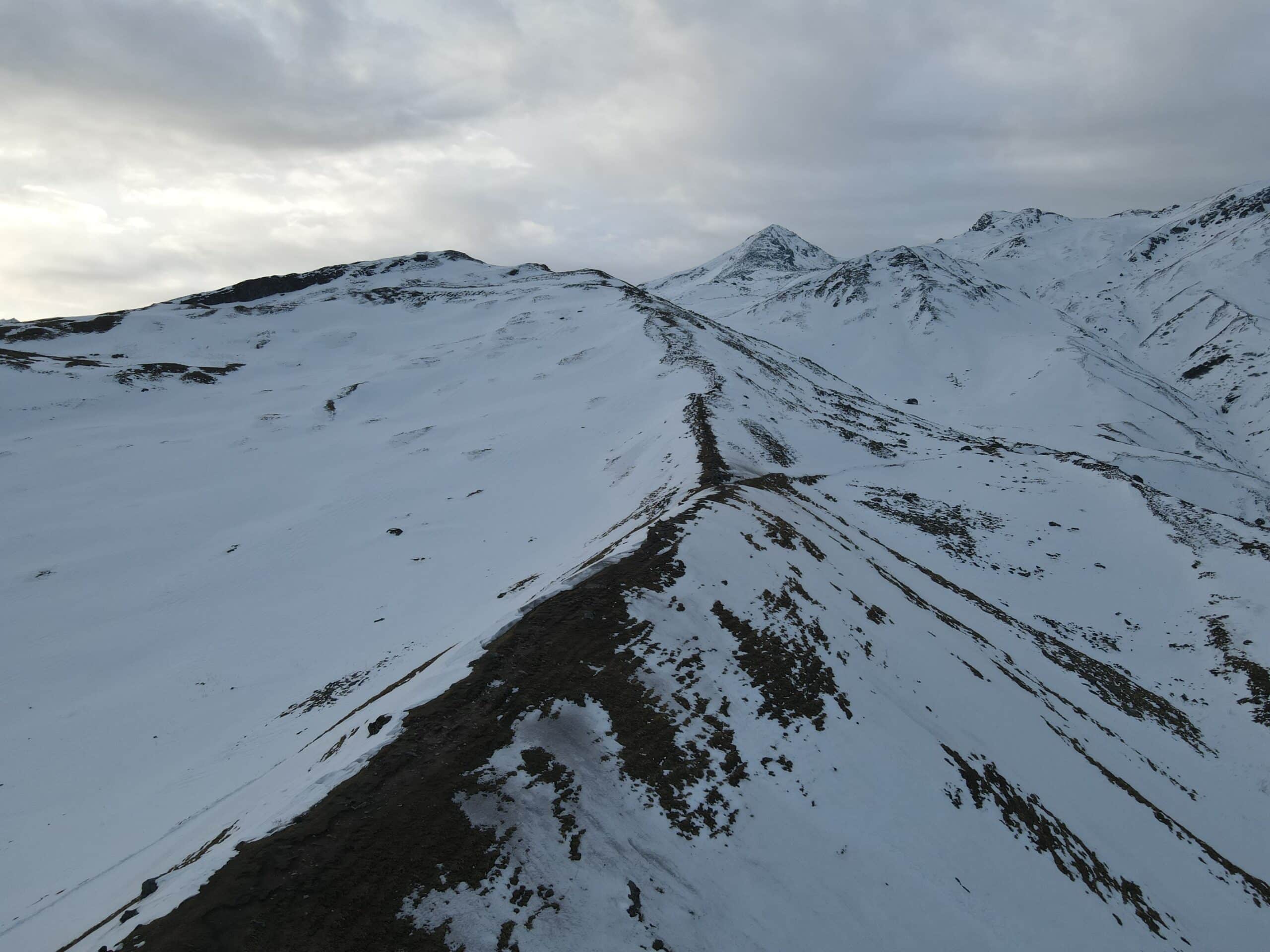Explore The Himalayas: Beyond An Adventure
Firstly, I welcome all readers to the blog and article page of Trekup India. I, Nanda Rawat, was born and raised in the Himalayas and have known them from the heart. Through this article, I am excited and glad to showcase the Himalayas from my perspective. The Himalayas are more than an attraction; they go beyond the beautiful snow-capped mountains and vast mountain ranges. Let me describe the Himalayas in my own words: “Dramatically super powerful.” They represent nature’s magnificence and supremacy, rising dramatically above the plains. These vast mountains create a natural border between the Indian subcontinent and the Tibetan plateau, encompassing some of the world’s highest peaks, deep gorges, and extensive glaciers, making it one of Earth’s most dramatically mesmerizing landscapes.
Beyond their physical attractions, the Himalayas have deep roots in spiritual, cultural, and traditional significance. They mark the birthplace of ancient religions and philosophies, housing numerous temples, monasteries, and pilgrimage routes, often referred to as the Abode of Gods. The people living in the Himalayas—resilient and resourceful—have adapted to life in one of the most challenging environments on the planet, striving to preserve their traditions and culture.
The Himalayas are also a crucial environmental region, often called the “Water Towers of Asia.” Most major rivers originate in the Himalayas, sustaining millions of people downstream. However, this fragile ecosystem faces climate change, deforestation, and unsustainable tourism threats.
Below, discuss some aspects one should consider while adventuring or travelling in the Himalayas.
The Religious Aspects of the Himalayas and Its Preservation
The Religion Aspect: Traveling the religious path holds philosophical importance in the Himalayas, determining the cultural, spiritual, and social fabric of the region. The people are deeply intertwined with the religious beliefs and practices of those who live there. Many people make journeys from afar seeking spiritual fulfilment when other perspectives, whether medical care, hope, trust, or wishes, fail. A spiritual path often offers a way out.
Challenges and Preservation: While religion remains a vital force in the Himalayas, it faces challenges from both external and internal pressures. Climate change, the overburden of tourism, the modernization of the ecosystem, and the commercialization of sacred sites play a crucial role in disrupting the sanctity of these places, raising concerns about preserving religious traditions and practices.
The Himalayan Astronomy and Its Preservation
Stargazing in the Himalayas offers a unique and transformative experience, combining the mountains’ natural beauty with the cosmos’ wonder. The region’s pristine night skies and growing interest in astronomy make it a hotspot for both amateur stargazers and seasoned astronomers. As interest in Himalayan astronomy grows, it will be essential to balance tourism with conservation efforts to ensure these dark skies remain untouched for future generations.
Beyond an Adventure: Ways to Support the Himalayas
Volunteering in Schools and Educational Institutions: Remote Himalayan regions still struggle to reach educational standards. It’s always a good practice to visit local schools and academic institutions to understand the education system, which often faces challenges like limited resources. Volunteering to teach, play sports, or donate educational materials and sports equipment is always welcomed.
Collaboration with Local Social Workers/NGOs: Many registered NGOs work towards improving education, healthcare, environmental conservation, and village/community welfare. As a traveller, you can contribute in various ways—financially, by raising awareness, or by volunteering.
Volunteering in Himalayan Agriculture: Spend time working on the agricultural lands of local villagers, helping and understanding Himalayan agriculture. Experience the organic produce, learn the daily practices of Himalayan farmers, and understand the challenges they face, comparing manual farming in the Himalayas with modern agriculture in the plains.
Workshops on Knowledge Sharing: If you have skills in sustainable agriculture, first aid, medicine, cooking, or sports, consider offering workshops or training sessions to villagers.
Skill Sharing: Offer workshops in sustainable agriculture, first aid, or education to help empower local communities.
Cultural Exchange: Learn about Himalayan culture and share your cultural practices. This mutual exchange can strengthen community ties and help preserve cultural heritage. Participate in local fairs, festivals, and cultural events that are significant to the community.
Taking Away Good Memories: What Do You Give Back?
Your adventure will be filled with good memories, but giving back to the locals can be just as rewarding. Consider giving thoughtful gifts or souvenirs to show appreciation and build positive community relationships. Here are a few meaningful giveaways:
Warm Clothes: Items like gloves, hats, or scarves can be helpful in colder regions.
School Supplies: Notebooks, pencils, pens, and educational materials can significantly help.
Health Essentials: Basic medical supplies as it has limited access to healthcare facilities.
Handicrafts: Bring souvenirs from your own culture which create meaningful gestures.
Simple Tools: Multi-purpose knives or solar-powered gadgets can be practical remotely.
Gardening Seeds: Consider giving seeds for crops or flowers that can grow in the local climate, contributing to the community’s agriculture.
Ideas: Drawing, painting supplies, personalized gifts like photographs, jewellery boxes, etc.
Tips for Giving
Be Respectful: Always ask or observe if gifts are appropriate, especially in culturally sensitive areas. Avoid giving items that might create dependency or alter local dynamics.
Give Discreetly: It is often better to give gifts privately to avoid creating a sense of obligation or competition among recipients.
Consider the Impact: Make sure your gift can be used or appreciated without disrupting local customs.
Engage, Experience, and Encourage Himalayan Fairs and Festivals
It is recommended that you plan your trip to coincide with local festivals. This offers a unique opportunity to immerse yourself in the local culture, traditions, and spirituality. Seeing the community gather in everyday attire to celebrate their festivals is a once-in-a-lifetime experience filled with colour, vibrancy, love, and positivity.
How to Make the Most of the Experience
Research: Learn about the destination, the festivals, and their rituals and customs. This knowledge will enhance your appreciation and help you participate respectfully.
Check Dates and Locations: Himalayan festivals are often based on lunar calendars or local traditions, so that dates can vary. Festivals are usually organized in community halls, temples, or monastery complexes, so plan accordingly.
Witness and Participate: Immerse yourself by dressing appropriately, learning basic phrases, joining processions, attending ceremonies, volunteering for community services, supporting local artisans, and participating in clean-up drives.
With respect, curiosity, and active participation, you can create meaningful connections and contribute to preserving and celebrating the region’s rich cultural heritage.
Beyond these activities, there is much more to explore.
Click here for upcoming treks
Click here for Upcoming tours & backpacking trips
Share this article
Want To Trek Like Pro?
Check out the following videos if you want to trek like a pro trekker and improve your skills. These videos contain helpful tips, tricks, and techniques to help you trek like a pro. Whether you’re a beginner or an experienced trekker, these videos can provide valuable insights to enhance your trekking experience. So, watch the videos below by Trekup India experts to take your trekking skills to the next level.







Know Everything About Acute Mountain Sickness
Acute Mountain Sickness is a medical condition that can occur when individuals travel to high altitudes, typically above 8,000 feet. It is caused by the decrease in air pressure and oxygen levels in the air as altitude increases. Symptoms of Acute Mountain Sickness may include headache, nausea, vomiting, dizziness, and difficulty sleeping. To avoid Acute Mountain Sickness, it is important to gradually adjust to high altitudes and seek medical attention if symptoms worsen. To learn more about this condition, check out the videos by Trekup India.









